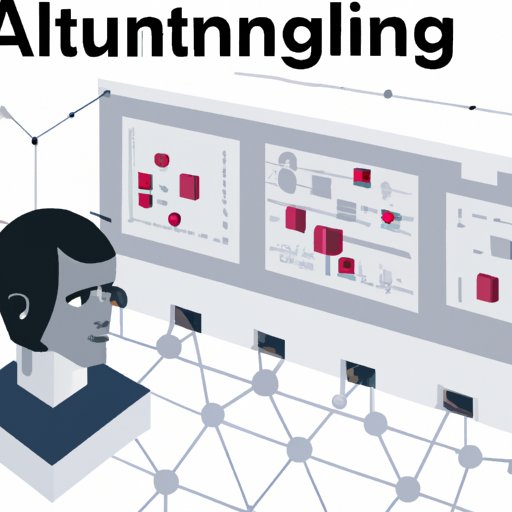Introduction
Artificial intelligence (AI) is becoming increasingly commonplace in our lives. From autonomous cars to virtual assistants, AI is transforming how we interact with technology and how technology interacts with us. But what is AI, and how do you create an AI system? In this article, we’ll explore the challenges and requirements for making AI, research existing solutions, design a prototype, test and refine your prototype, deploy and monitor your AI system, and more.
What is AI and How Does it Work?
AI is a form of computer science that enables machines to perform tasks traditionally associated with human intelligence such as decision-making, problem-solving, and learning. AI systems use algorithms and data to learn from their environment and make decisions without being explicitly programmed to do so. For example, a self-driving car will use AI to detect objects in its environment, determine the best course of action, and react accordingly.

Challenges and Requirements for Making AI
Creating an AI system requires a significant amount of time and effort. It’s essential to have a clear understanding of the problem you’re trying to solve and the data needed to solve it. Additionally, AI systems require large amounts of data to train and test them. You’ll need to carefully consider the type and quality of data you use, as well as any ethical implications related to the data. Finally, AI systems are complicated and require a lot of computing power, so you must ensure you have sufficient resources to build and deploy your system.
Research Existing Solutions
Before starting your project, it’s important to research existing solutions to understand best practices and potential pitfalls. There are many resources available to help you get started, including academic papers, tutorials, and open source projects. These resources can provide valuable insight into the design and development of AI systems. Additionally, there are numerous forums devoted to AI where you can ask questions, discuss ideas, and find collaborators.
Design a Prototype
Once you’ve done your research, it’s time to start designing your AI system. You’ll need to consider a variety of factors, including the type of problem you’re trying to solve, the data you’ll be using, and the type of algorithm you’ll be implementing. Additionally, you’ll need to decide whether to use supervised or unsupervised learning, as well as which tools and frameworks to use. Finally, you’ll need to consider the hardware and software infrastructure required for your system.
Steps for Creating a Prototype
Once you’ve identified the necessary components for your system, you’ll need to start building a prototype. The steps involved in this process include collecting and preparing the data, selecting and training the model, and validating the results. Each step should be done carefully and systematically to ensure accuracy and reliability. Additionally, you may need to adjust your approach based on the results of your experiments.

Test and Refine Your Prototype
Once you’ve designed and built your prototype, it’s time to test and refine it. This involves experimentation and data analysis to identify areas that need improvement. Additionally, you’ll need to consider ways to optimize your system, such as reducing the size of your model or improving the accuracy of your predictions. Once you’ve identified areas for improvement, you can begin to refine your system.

Deploy and Monitor Your AI System
Once your AI system is ready to deploy, you’ll need to set up the necessary tools and techniques to ensure it runs smoothly. This includes setting up logging and monitoring tools to track performance and identify issues. Additionally, you’ll need to consider security measures and other factors to ensure your system is safe and secure. Finally, you’ll need to regularly update and maintain your system to ensure it continues to meet your goals.
Conclusion
Creating an AI system can be a complex and challenging task, but with the right knowledge and resources, it’s possible to build a powerful and effective system. First, you’ll need to understand the challenges and requirements for making AI. Then, you’ll need to research existing solutions and design a prototype. After that, you can test and refine your prototype and deploy and monitor your AI system. With careful planning and execution, you can create a successful AI system.
(Note: Is this article not meeting your expectations? Do you have knowledge or insights to share? Unlock new opportunities and expand your reach by joining our authors team. Click Registration to join us and share your expertise with our readers.)
